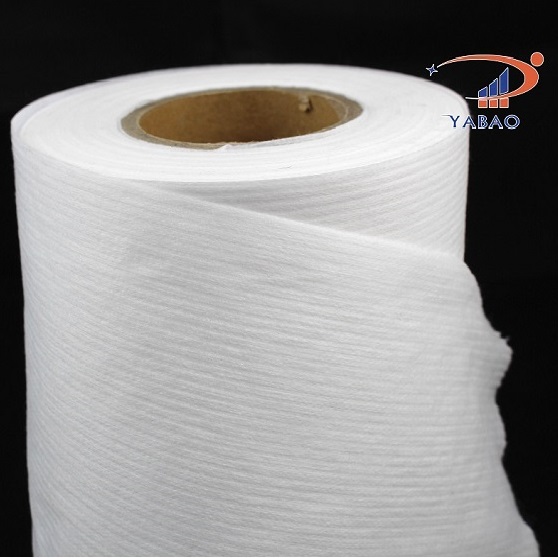A production line for non woven fabric typically involves several key processes, including:
Raw material handling: Non woven fabric can be made from a variety of materials, such as polypropylene, polyester, and rayon. The raw materials are typically delivered to the factory in large bales or rolls and must be stored and handled appropriately to prevent contamination.
Fiber preparation: The raw materials are fed into a machine that separates the fibers and prepares them for the next stage of production. This may involve blending different types of fibers to achieve specific properties, such as strength or softness.
Web formation: The fibers are then passed through a series of machines that create a web of material. This can be done using a variety of methods, such as carding, air-laid, or melt-blown.
Bonding: The web of material is then passed through a bonding process to give it strength and stability. This may involve using heat, pressure, or chemicals to bond the fibers together.
Finishing: The non woven fabric is then finished to achieve specific properties such as softness, water resistance, or color. This may involve additional chemical treatments, calendaring, or other processes.
Cutting and packing: The finished non woven fabric is cut to size and packaged for distribution to customers.
Each of these processes requires specialized equipment and skilled operators to ensure consistent quality and efficiency. A non woven fabric production line may include multiple machines for each stage of production, non woven suppliers as well as quality control systems to monitor the process and ensure that the final product meets customer specifications.
Non woven suppliers: The Major Advantages
Non-woven fabrics have several advantages that make them a popular choice for a wide range of applications.
Some of the major advantages of non-woven fabrics include:
Versatility: Non-woven fabrics can be made from a variety of materials, and they can be engineered to have specific properties such as strength, absorbency, or water resistance. This versatility makes them suitable for a wide range of applications, from hygiene products and medical supplies to furniture and automotive components.
Cost-effectiveness: Non-woven fabrics can be produced using less raw material and energy compared to traditional textile manufacturing, which makes them a cost-effective option for many applications.
Strength and durability: Non-woven fabrics can be engineered to have high strength and durability, making them suitable for use in applications where strength and stability are important.
Breathability: Many non-woven fabrics are breathable, which makes them comfortable to wear or use in applications where air circulation is important.
Resistance to moisture and chemicals: Non-woven fabrics can be engineered to be resistant to moisture, chemicals, and other environmental factors, making them suitable for use in harsh or demanding environments.
Customizability: Non-woven fabrics can be engineered to have specific properties, such as color, texture, or pattern, making them a customization option for many applications.
Eco-friendliness: Many non-woven fabrics are made from recyclable materials, and they can often be recycled after use, making them an eco-friendly option for many applications.
Overall, the versatility, cost-effectiveness, strength, and durability of non-woven fabrics make them a popular choice for a wide range of applications.
